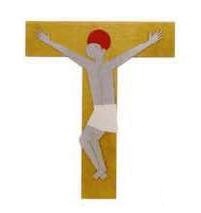Camele Crosses Art
The David Camele Crosses Adorn all academic buildings on Xavier's campus.
Quick Facts
Artist: David Camele
Location: Numerous buildings across campus
Description by artist
Cross and Crucifix:
There are two dominant cross forms in Christianity: the Latin cross with its longer vertical member and the equilateral or Greek cross. The latter is the older of the two and its shape is basic to the majority of Christian crosses.
A crucifix is a cross (Latin crux) with the body or corpus of Jesus fixed (Latin figere) on it (1). Thus, every crucifix is a cross but not every cross is a crucifix (2). The fact is that we don't know, with any certainty, the configuration of the actual instrument on which Jesus was crucified. Artistic interpretations, inherited histories, and theological viewpoints have determined, and still determine, the shapes and styles of Christianity's crosses and crucifixes.
Four Elements
The use of four elements (3) in addition to the four arms of the cross occurs again and again in Christian art. These four elements were meant to convey the four Gospels or Evangels (good news) which constitute the heart of the Christian scriptures. In some cases, the elements were the traditional symbols of the evangelists: man or angel for Matthew, lion for Mark, ox forLuke, and Eagle for John.Other elements such as small crosses, precious stones, and ornaments were used. Usually these elements were arranged around the intersection of the main cross, emphasizing that the gospels were central to the Way of Christianity.
On the Jerusalem Cross or the Crusader's Cross, four smaller crosses (4) are positioned to represent the 'four corners' of the world, the ends of the earth. In the Cross Potent (powerful) or Epiphany cross (Epiphany = Greek appearing) the four smaller crosses are joined at their base and radiate outwardly (5) in the four directions of the compass. The symbolism is that of Christ being manifest to the whole world. The world was sometimes emphasized by incorporating its orb or circle symbols (6) into the design.
Five Wounds
Until the crucifix and the literal portrayer of Jesus on the cross, the rendering of his death and resurrection was often represented by his five wounds (7). These wounds were not only emblematic of his death but of his resurrection as well. For this reason, the wounds were frequently symbolized by the precious stones or ornaments.
This emphasis on the glory of Christ's wounds (8,9) is dramatically set forth in the Easter Vigil Liturgy of Holy Saturday. At the beginning of the Vigil, the new Paschal Candle, representing Christ as the Light of the World (Lumen Christi) is decorated with ornaments containing incense. These are set into the candles and the priest says,
'By his holy --
and glorious wounds --
may Christ our lord--
guard us--
and keep us. Amen'
Creature Symbols
The early Church had no interest in literal representations of Jesus on the cross. Instead, images of the Christ portrayed him as a lamb, the Lamb of God (Latin Angus Dei). In the Book of Revelation and for centuries after its composition, the Lamb was the dominant symbol of the Savior. As late as the 16th century, artists portrayed the Savior as the Holy Lamb even though the human figure of Jesus on the cross had become common. Other symbols, such as the glorious wounds or the banner of victory, were frequently shown in the Lamb (10,11).
Christianity has used a variety of creatures to represent its Savior: mother hen, fish, lion pelican, unicorn, etc. In the Book of Numbers, the people are saved from death by looking upon the bronze serpent which Moses made according to the Lord's instruction. In the Gospel of John, the Son of Man is compared to the bronze serpent as the Savior of all people. Well into the Middle Ages, the serpent raised up on the cross was seen by the Church as an image of its Lord (12).
Corpus Christi
The crucified body of Christ does not appear with any frequency or general acceptance until the 7th Century. Early on, the figure was shown fully robed (13,14). Any representation of the Lord wearing a mere loin cloth or completely naked, as was the actual case in Roman crucifixion, would have outraged Christians (15). Cross types other than the Greek and Latin forms were a common part of Christian tradition, e.g., the X Cross or Cross of St. Andrew. One of the earliest is the Tau Cross, so-called because of its resemblance to the Greek letter 'T' (16). Its form illustrates one of the methods of Roman crucifixion. The condemned person carried the horizontal beam (patibulum) to the place of execution. There, the patibulum, with the victim's hands and arms nailed and roped to it, would be joined to the in-ground post (stripes) already in place.
Catholicity
Images of the cross and the crucifixion are as varied and universal, i.e., Catholic, as Christianity itself. In this sense, they have become metaphors of the Church. The catholicity of their forms and styles reflect the vast range of peoples and times and places which have composed, and continue to compose, the Church. For example, even though cross forms pre-dated Christianity, some of those so-called pagan signs were adopted by the Christians who saw them as prototypes of their own symbols even as the early Church saw in the scriptures of their Hebrew ancestors, antecedents to the life, death, and raising of Jesus. Other forms were adopted and/or reinvented by Christianity as it came into contact with the rituals and the symbols of barbarians (foreigners). In other words, there is no single form or expression of the Christian cross any more than there is only one way to be a Christian.
This is not to say that all crosses are beautiful or appropriate. Nor is it accurate to say that all the ways of Christianity have been right or grace-filled or life-bringing. Under the sign of the cross, Christians have persecuted and slaughtered others and each other. The cross was worn on the tunics of the Crusaders as they made Jerusalem run with Muslim blood. The cross was displayed on the bombers of the German Luftwaffe and Wehrmacht. In our country, the cross became the emblem of the Ku Klux Klan and their sign of terror. For some, the cross and flag have become synonymous, belonging only to those who see them as their private properties. Sadly, such sacrilegious use of the cross is also part of its history.
Perhaps the most important point to be made about the cross is that it is basically and finally defined by its context and association. It cannot be defined outside of its cultural, religious, or political environment nor independently of those who claim it as their own. It does not simply bring identity and meaning to those who claim it. As well, its meaning and purpose flow from those who proclaim it.
Design and fabrication of the Xavier Wall Crosses
Early on in this project I decided to use contemporary processes for the fabrication of the crosses. My drawings were computer-scanned and then programmed for the metal work, acrylic, and printing. The metal was cut by a pressure-driven stream of abrasive and water. All of the acrylic plastic parts were cut by metal routers. The color images were digitally-printed on canvas.
I believe that modern techniques and materials are completely appropriate for a project such as this. Artisans and artists have always experimented with the newest materials and techniques. It's what we do. The idea that only traditional methods and materials are appropriate for religious and ritual art is as ludicrous to me as saying that worship spaces shouldn't be air-conditioned or that the Book of the Gospels shouldn't be digitally printed.
It should be obvious from looking at the Xavier Wall Crosses that we intended to emphasize the catholicity of the cross. Regardless of our individual perceptions of it, or what we want it to be, the cross is always much more as is the Christianity it symbolizes. My hope is that the Xavier Wall Crosses will be evocative; that they will call forth questions and reactions. The worst thing would be that they will be innocuous and ignored. As with the cross, so with the faith it signifies.
-David Gabriele Camele
*More information on the artist.
A PDF version of the information below is also available: Side 1 of the brochure, Side 2 of the brochure.
Gallery
1.
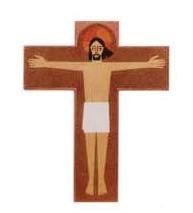
2.
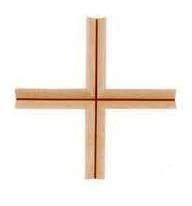
3.
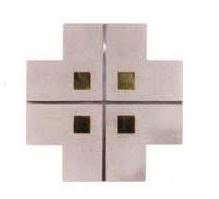
4.

5.
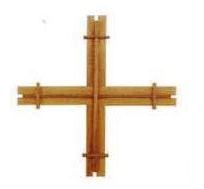
6.
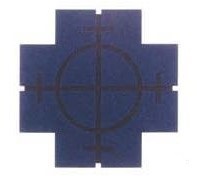
7.
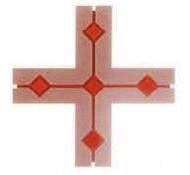
8.
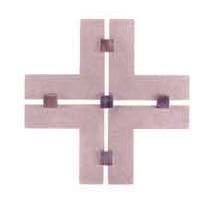
9.
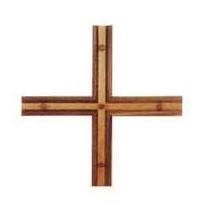
10.
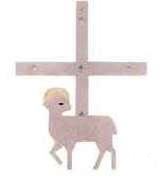
11.
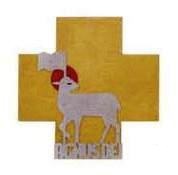
12.
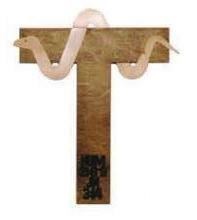
13.
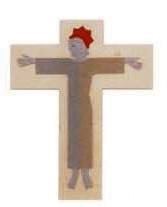
14.
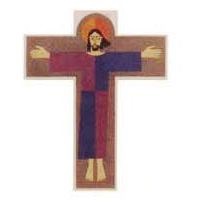
15.
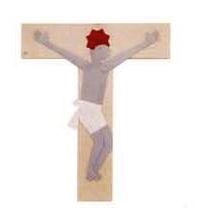
16.
